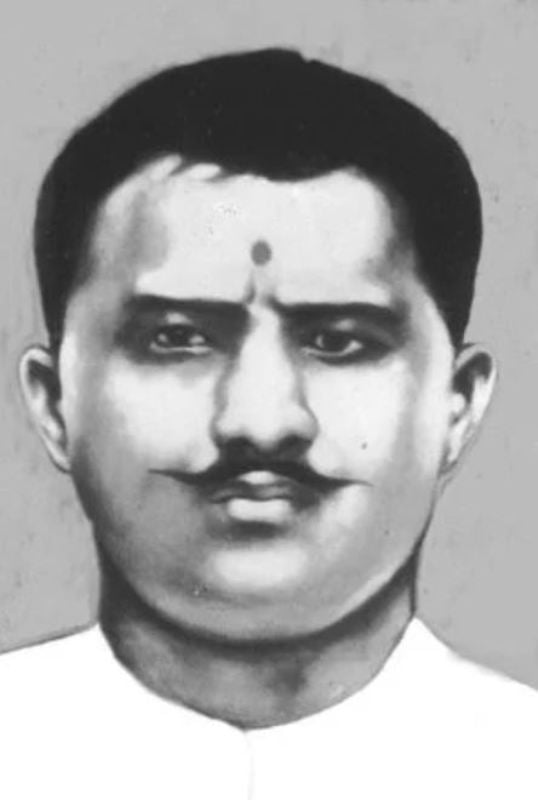PERSONAL INFORMATION
Nickname(s)[1]The Indian Express: • Ram • Agyat • Bismil
Profession(s): • Revolutionary Freedom Fighter • Poet • Writer
Famous for: Being one of the founder of the Hindustan Republican Association, the mastermind of the Kakori Train Conspiracy in 1922, and for involving in the Mainpuri Conspiracy in 1918
Date of Birth: 11 June 1897 (Friday)
Birthplace: Shahjahanpur, North-Western Provinces, British India
Age (at the time of death): 30 Years
Zodiac sign: Gemini
Nationality: Indian
Hometown: Shahjahanpur, Uttar Pradesh
Caste: Brahmin [3] Waiting for Swaraj: Inner Lives of Indian Revolutionaries
Check Out Other Celebrities Biography
- japji khaira punjabi actress biography
- jeet actor biography
- satya paul biography
- arjun ashokan biography
- praniti shinde biography
EDUCATION
School: • Mission School • Local government school in Shahjahanpur
Educational Qualification: School education from Mission School and Local government school in Shahjahanpur [4] Poem Hunter
PHYSICAL STATISTICS
Eye Colour: Black
Hair Colour: Black
FAMILY & RELATIONSHIPS
Marital Status (at the time of death): Unmarried
Affairs/Girlfriends: Not Known
Wife/Spouse: N/A
Parents: Father – Murlidhar Mother – Moolmati Grandfather – Narayan Lal Grandmother – Vichita Devi Uncle – Kalyanmal
Siblings: Brothers – 2 • Ramesh Singh • The name of one brother is not Known Sisters – 5 • Shastri Devi • Brahmadevi • Bhagwati Devi • The names of two sisters are not known
Marital Status: Unmarried
OTHER INFORMATION
Date of Death: 19 December 1927
Place of Death: Gorakhpur, United Provinces, British India
Death Cause: Execution by hanging during participation in the Indian independence movement [2] India Today
Death Date: 19/12/1927
INTERESTING BACKGROUND INFORMATION
Ram Prasad Bismil, a pivotal figure in India’s struggle for independence, was born into a turbulent world where both illness and adversity marked his early life. Following his birth, Bismil faced a grave health crisis, and his family feared for his survival due to the limited medical resources available in their village. Tragically, they had already lost another son to similar circumstances. However, through the intervention of his grandfather, who employed traditional methods believed to be supernatural, Bismil’s life was miraculously saved. This initial struggle foreshadowed the resilience and courage that would define his later years as a revolutionary.
Bismil’s formative years were characterized by an unconventional education, primarily conducted at home by his father, who instilled in him a love for Hindi literature, while a local moulvi taught him Urdu. He excelled academically, passing his middle school examination with distinction from an English Mission School. His early years were not without their challenges, as he grappled with rebellious tendencies, including a penchant for pilfering money from his parents and smoking cigarettes. By age fourteen, he had developed a habit of consuming up to sixty cigarettes daily. However, his involvement with the Arya Samaj movement proved transformative, helping him overcome these vices with the support of his friend, Munshi Indrajit.
Bismil’s political awakening began in earnest when he transitioned from his higher school education to engage with the Indian National Congress in Lucknow. Here, alongside local school teacher Pandit Genda Lal Dixit, he co-founded the Matrivedi organization, laying the groundwork for his revolutionary activities. By 1918, he had masterminded the Mainpuri Conspiracy, and in 1925, he orchestrated the notorious Kakori train robbery, events that would cement his legacy as a formidable revolutionary leader. Despite living underground in various districts of Uttar Pradesh during this tumultuous period, Bismil’s intellectual pursuits flourished; he wrote several books, including translations from Bengali and English to Hindi, and composed impactful poetry that captured the spirit of the freedom struggle, such as “Sarfaroshi Ki Tamanna” and “Man Ki Lahar.”
Bismil’s commitment to the cause of Indian independence ultimately led to his arrest following the Kakori train robbery. Rather than flee from the impending consequences, he faced the British authorities with unwavering resolve. While imprisoned in Gorakhpur, he continued to write, completing his autobiography just days before his execution on December 19, 1927. The emotional weight of his impending fate resonated deeply with his family, particularly his brave mother, who visited him the day before his hanging. Her strength in the face of despair moved Bismil, prompting a poignant exchange that highlighted his commitment to the revolutionary path he had chosen. Even in his final moments, he exuded an indomitable spirit, exercising in his cell and expressing a desire to return in another life to continue the fight against colonial oppression.
Following his execution, Bismil’s legacy endured, inspiring future generations of freedom fighters, including Bhagat Singh. His works, such as “Kranti Geetanjali,” were published posthumously, despite facing bans from the British government. His influence shaped the national consciousness, ensuring that his voice remained a rallying cry for those seeking liberation from colonial rule. Statues, parks, and railway stations commemorating his life and contributions have been established, serving as enduring testaments to the sacrifices he made for his motherland. In every aspect of his life, from his literary achievements to his revolutionary actions, Ram Prasad Bismil’s unwavering dedication to India’s independence shines brightly, a beacon of inspiration for future generations yearning for freedom.
—
Note: All biographical information compiled from publicly available sources.
